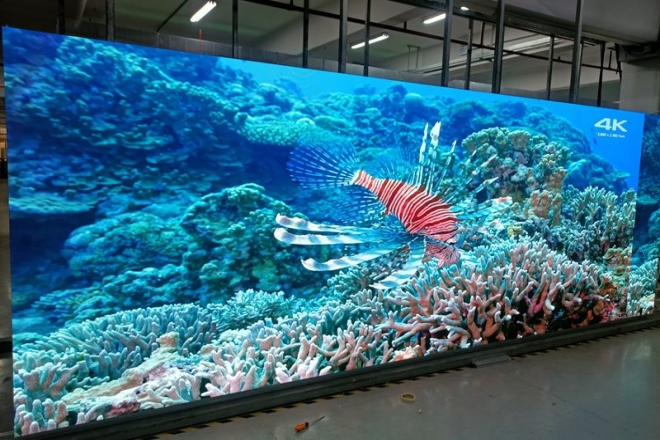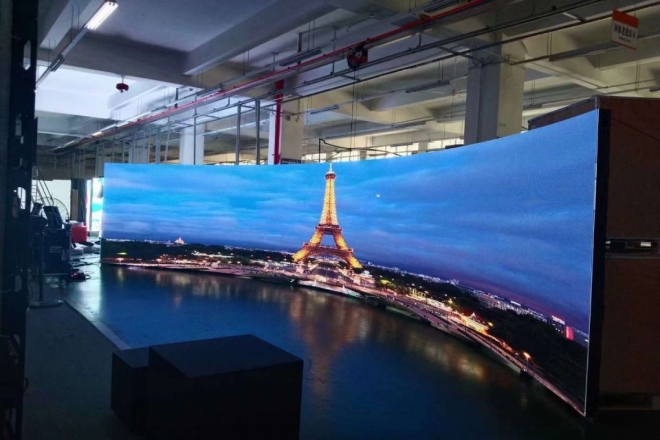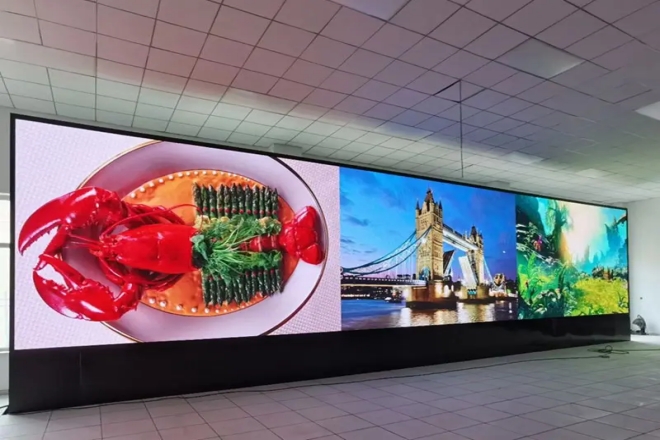Introduction

In this era where vision is king, high-definition LED display screens have become a key stage for conveying information and showing creativity. But have you ever stopped in front of those stunning display screens, longing for the picture to be more delicate and the color to be more saturated?
This article goes straight to the core and will reveal to you how to make high-definition LED display screens achieve a qualitative leap. It not only analyzes the technical secrets behind it but also provides practical improvement strategies.
Whether you are an industry expert, a technology enthusiast, or a decision maker seeking innovative solutions, this article can bring you unprecedented inspiration and gains, allowing your LED display screen project to stand out and lead a new trend in visual display.
1. Simple understanding of the basic concepts of high-definition LED display screens
1). What is a high-definition LED display screen?
A high-definition LED display screen is like an oversized, super-clear electronic screen. It has many small lights (LED lights) on it, which can emit light of different colors. By controlling these lights, we can see various pictures, videos and texts on it, and they look very clear.
1.1). Key parameters affecting display effects
Resolution is like the degree of fineness of the screen. The higher the resolution, the more “small grids” there are on the screen, the finer the picture is, and the more details you can see.
This parameter refers to the distance between two adjacent “small grids” on the screen. The smaller the PPI, the denser the “small grids,” and the smoother and less grainy the picture looks.
- Contrast:
Contrast is like the contrast between light and dark in the picture. The higher the contrast, the greater the difference between the brightest and darkest parts of the picture so that the picture looks clearer and the colors are more vivid.
- Color depth:
The color depth determines how many colors the screen can display. The higher the color depth, the richer the colors on the screen, the more natural the transition, and it looks more like the real world.
2). The difference between HD LED and traditional LED
- Detail expression:
HD LED display can show more details, just like you can see more small details when you look at a painting with a magnifying glass. The traditional LED may appear a bit “rough.”
- Color reproduction:
The colors of the HD LED display are more realistic and rich. Just like when you take pictures with your mobile phone, a high-pixel mobile phone can take pictures with colors closer to the real world.
- Viewing comfort:
Because the HD LED display has a clearer picture and more natural colors, your eyes won’t feel tired after watching it for a long time. Traditional LEDs may feel uncomfortable after watching it for a long time because the picture is not delicate enough or the color is not natural enough.
2. What are the technical challenges of HD LED displays?

1). Balance between brightness and contrast
Problem: Imagine if the screen is too bright, just like you are looking at your phone under the sun, the colors may become less vivid or even a little distorted. But we need the screen to be bright enough to see clearly outdoors or in places with strong light.
Solution: Engineers will find ways to adjust the small lights (LEDs) on the screen so that they can emit enough light while keeping the colors accurate. They will also design special things, such as filters or lenses, to help distribute the light better and make the screen look clearer.
2). Viewing angle limitation
Problem: When you stand right in front of the screen and look at it, everything is perfect. But if you turn your body slightly to the side, you may find that the screen has become darker and the colors have changed. This is the viewing angle limitation.
Solution: Engineers will improve the arrangement of the small lights on the screen so that the light they emit can remain uniform and bright at a wider angle. In this way, no matter which angle you look at the screen from, you can get a good viewing experience.
3). Challenges brought by the reduction of pixel pitch
Problem: In order to make the screen clearer, we need to make the small grids (pixels) on the screen smaller. But this is like building a house with smaller building blocks, which will greatly increase the difficulty.
Cost and technical difficulty: Smaller pixels mean more sophisticated manufacturing processes and more expensive materials. At the same time, controlling so many small pixels to work together also requires more powerful technology and equipment.
Solution: Engineers are working on new technologies, such as Micro LED and Mini LED, which can make pixels smaller while maintaining high performance. Although these technologies are still expensive now, the cost will gradually decrease over time.
4). Image processing and transmission
Problem: High-definition video requires a lot of data to support it, just like the file size of an HD movie is much larger than that of an ordinary movie. So, how to process and transmit this data quickly and accurately is a big problem.
Solution: Engineers will develop more powerful chips and software to process this data so that it can be displayed on the screen in real-time. At the same time, they will also use more efficient transmission technologies, such as faster network connections and more advanced compression algorithms, to reduce the time and bandwidth required for data transmission.
3. What are the ways to improve the display effect of high-definition LED displays?

1). Use more advanced display technology
- Mini LED and Micro LED:
It’s like painting with a smaller brush, which can draw more detailed and clearer paintings. Mini LED and Micro LED are like very small LED lights. They can make the colors displayed on the screen brighter and richer, and the picture is more delicate and without graininess.
- Quantum dot technology:
It’s like adding a “super filter” to the color, making the color on the screen look fuller and more realistic. It’s like seeing a real sea of flowers, not a painting.
2). Optimize internal control and processing
- Advanced image processing:
It’s like taking a picture with an advanced camera and then retouching it with professional software. Image processing algorithms are like professional software that can make the screen clearer and more accurate in color, just like a photo that has been carefully processed.
- High-performance driver IC:
It’s like giving each LED light a smart “little housekeeper” to ensure that they can all emit light as required and not mess around. In this way, the picture of the entire screen will be more uniform, without dark corners or color deviation.
3). Design a better screen structure
- Modular design:
Just like a puzzle, the screen can be divided into many small pieces. In this way, if one piece is broken or you want to change the style, you can directly replace that piece without changing the whole piece. Moreover, the gaps between the spliced screens will be smaller and look more complete.
- Curved and special-shaped design:
Just like the screen can be “deformed”, the screen can be made into various shapes according to the venue or needs. For example, arc, circle, or even various irregular shapes. In this way, when the audience watches, they will feel more immersed in it, as if they have entered another world.
4). Adapt to different environments
- Intelligent brightness adjustment:
Just like the screen has “eyes,” it can sense the intensity of the surrounding light. Then, it will automatically adjust its brightness to make the picture look the most comfortable. In this way, whether it is day or night, you can see clearly and without glare.
- Cooling system optimization:
It is like installing an “air conditioner” on the screen to ensure that it does not “fever”. Because the screen will generate heat when working, if there is too much heat, it will affect the display effect. Therefore, optimizing the cooling system is to cool the screen and keep it in the best working condition at all times.
4. BIBILED's HD LED display case sharing
Conclusion
In summary, making HD LED display screens more HD is a process involving multi-faceted technical optimization and innovation.
From adopting advanced display technology to optimizing display drive and control systems to strengthening environmental adaptability, every link is crucial. At the same time, we also need to see that with the continuous advancement of technology and the continuous changes in the market, the definition of HD LED display screens will continue to be refreshed.
Therefore, as practitioners, we must maintain a keen insight, keep up with the pace of technological development, and constantly explore new possibilities.
Finally, if you want to know more about LED display screens, please get in touch with us.
